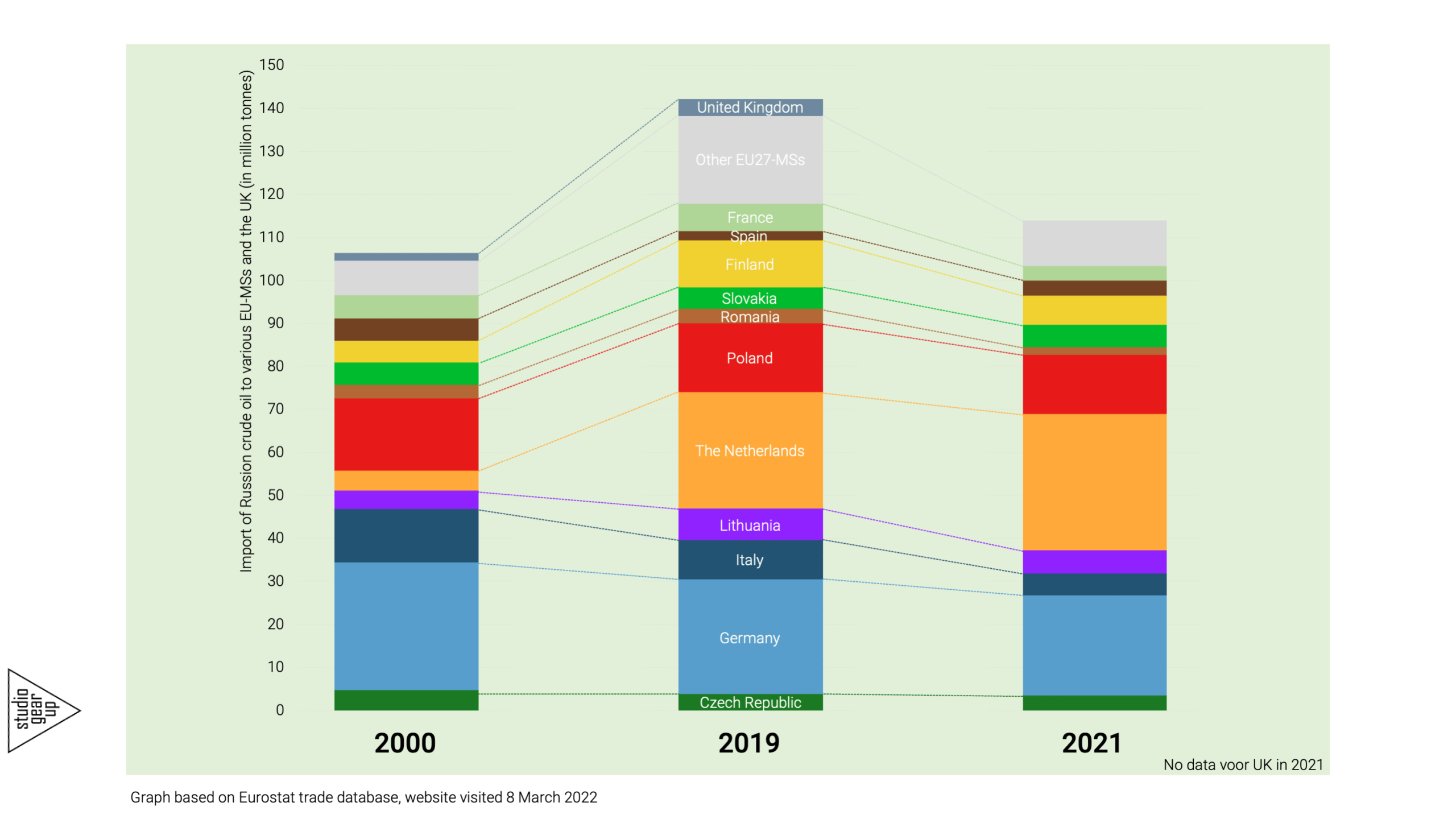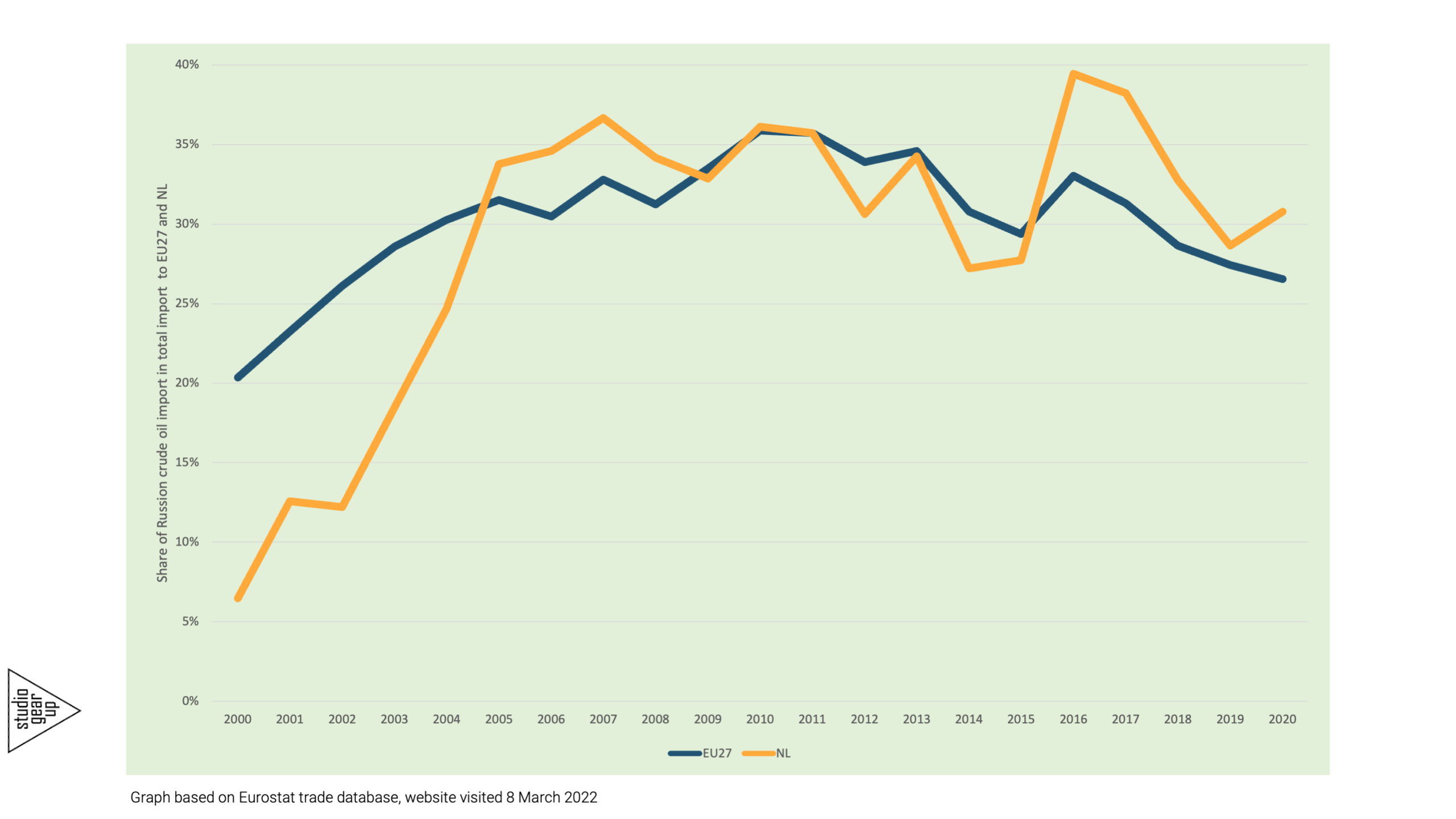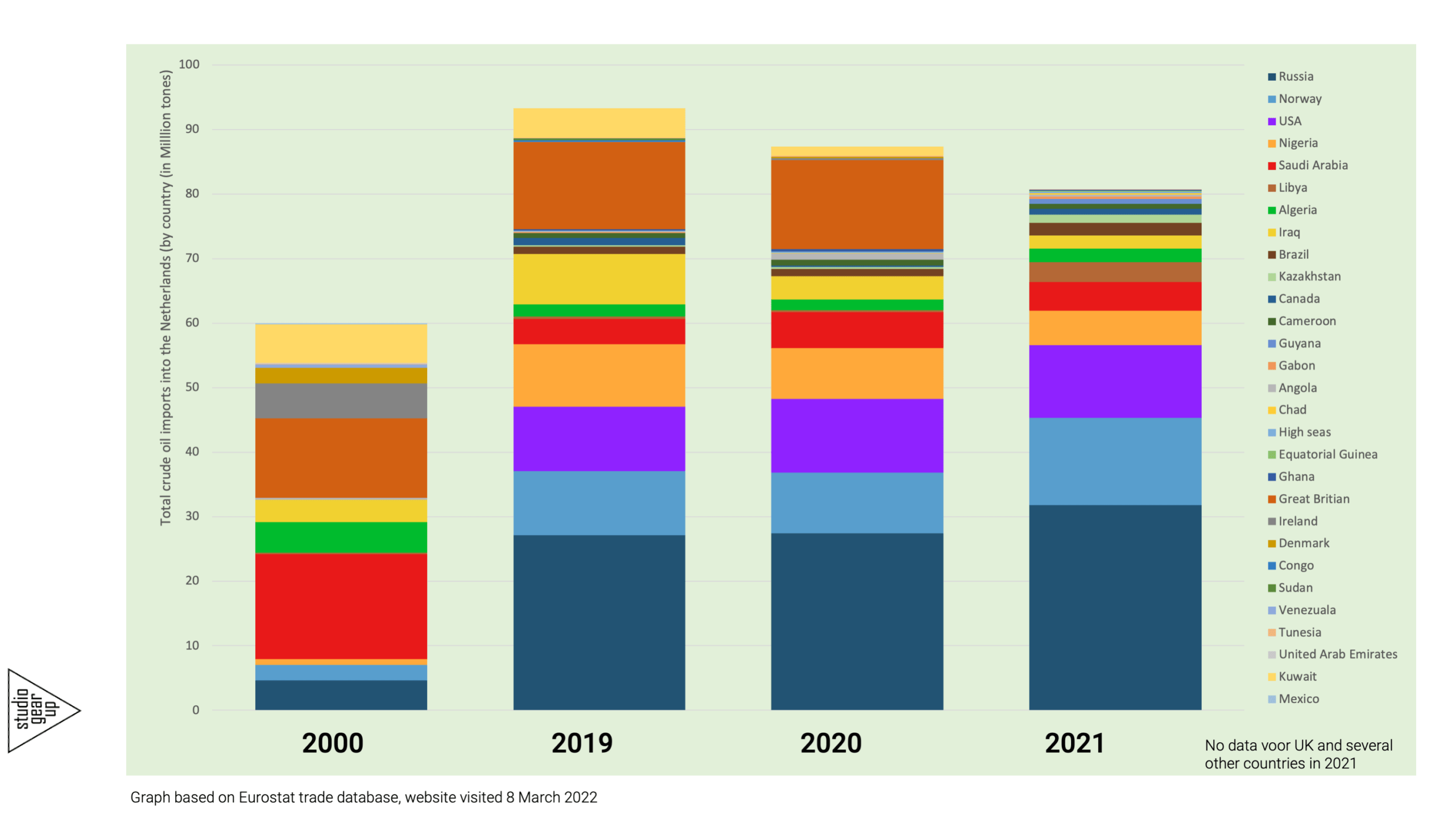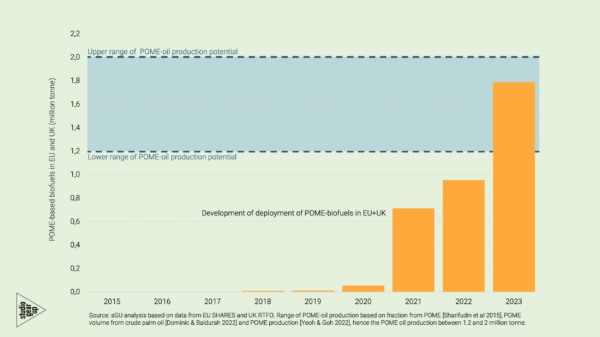The United States have announced to ban Russian oil and gas. Various Dutch national newspapers and many people on Twitter have explored the dependency of natural gas consumption in the Netherlands imported from Russia (see e.g. this article – in Dutch language – in De Volkskrant). The issue addressed the vulnerability of households which for heating still largely depend on natural gas. In this blog we look at the role of Russian oil imports in the Dutch economy. How is the relation between crude oil from Russia and the Netherlands?
The Netherlands imports far more crude oil than is consumed locally. The wider Rotterdam region is home to a number of oil refineries and chemical facilities that produce fuels and chemical products like plastic for the European and global market. Also, direct trading of imported crude oil to other countries, e.g. to Belgium, Germany is an important economic activity.
How much oil from Russia does the Netherlands import?
The next diagram gives an overview of the imported volumes for the year 2000, (the pre-COVID-19 year) 2019 and 2021. All data are based on the Eurostat database on trade. For 2021 some data are lacking, like for the UK, after leaving the EU. What can be seen is that the Netherlands, since the year 2000 has increased the total imported volume from Russia, whereas the other major importing countries in fact have stabilized, or slightly reduced, their imports from Russia over the same period. In 2021, The Netherlands, with a total of 31,7 million tonne, was of all EU27 countries the largest importer of Russian crude oil.

Diagram 1. Development of crude oil import from Russia to selected EU Member States (in 2000, 2019 and 2021; data from Eurostat)
How does the Dutch situation compare to other EU Member States that import significant volumes?
The Netherlands has shifted to import more Russian oil imports since the early 2000s and onwards. This is shown in the following diagram. In 2000 the share of Russian oil in the total volume of imported crude oil was around 6%. In 2005 it already had climbed to around one third of the total imports. Since then, the share of Russian crude oil fluctuated between 27% and nearly 40%, ending at 31% in 2020 (latest year that data on relative shares are available in Eurostat database).

Diagram 2. Share of Russian crude oil in total oil imports (for EU27 and for the Netherlands; data from Eurostat)
Other crude oil import options
Would it be possible, given the current circumstances to switch oil imports from Russia to imports from other countries?
The next diagram shows the most important countries the Netherlands imports crude oil from. As can be seen again, in 2021 around one third of oil originates from Russia. To replace the one third volume imported from Russia, the volume of the next three largest import countries (Norway, USA and Nigeria) would need to double. Other option could be to look at importing oil from e.g. Arabian countries.
Also, and this would be most preferable from a climate impact perspective, is to consider renewable liquid sources to replace Russian oil. This would enable oil refineries to boost their transition to using low-carbon and renewable feedstocks in their facilities.

Diagram 3. Overview of most important countries (by volume) that the Netherlands import crude oil from (data from Eurostat)



